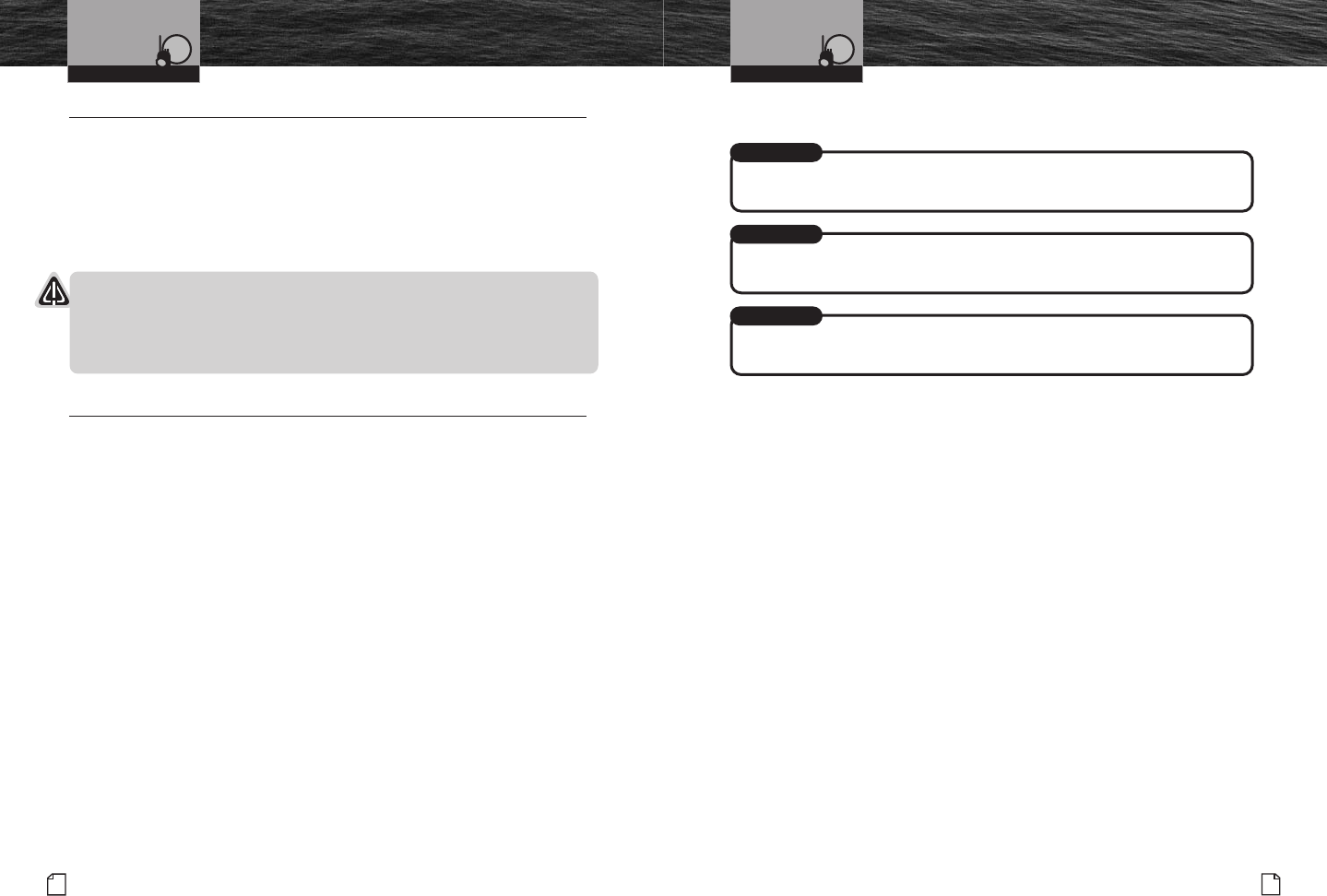
MAYDAY
PAN PAN
SECURITE
Radiotelephone Calls
Emergency Messages
and Distress Procedure
8
English
Nothing comes close to a Cobra
®
9
Radiotelephone Calls
•
Boaters may make and receive radiotelephone calls to and from any number on the
telephone network by using the services of public coast stations. Calls can be made
— for a fee — between your VHF radio and telephones on land, sea and in the air.
See pages 12 – 21 for the public correspondence (marine operator) channels.
If you plan to use these services, consider registering with the operator of the
public coast station that you plan to work through. Those services can provide
you with detailed information and procedures to follow.
CAUTION
You may disclose privileged information during a radiotelephone call.
Keep in mind that your transmission is NOT private, as it is on a regular
telephone. Both sides of the conversation are being broadcast and can be
heard by anyone who has a radio and tunes to the channel you are using.
Emergency Messages and Distress Procedure
•
The ability to summon assistance in an emergency is the primary reason
to have a VHF marine radio. The marine environment can be unforgiving,
and what may initially be a minor problem can rapidly develop into a
situation beyond your control.
The coastguard monitors Channel 16, responds to all distress calls
and coordinates all search and rescue efforts. Depending on the availability
of other capable vessels or commercial assistance operators in your vicinity,
coastguard or coastguard auxiliary craft may be dispatched.
In any event, do communicate with the coastguard as soon as you experience
difficulties and before your situation becomes an emergency. Use the emergency
message procedures only after your situation has become grave or you are faced
with a sudden danger threatening life or property and requiring immediate help.
If you are merely out of fuel, do not send an emergency message. Drop your
anchor and call a friend or marina to bring the fuel you need or give you a tow.
Marine Emergency Signals
The three spoken international emergency signals are:
The distress signal
MAYDAY is used to indicate that a station is threatened
by grave and imminent danger and requests immediate assistance.
The urgency signal
PAN PAN is used when the safety of the vessel or person
is in jeopardy. (This signal is properly pronounced pahn-pahn.)
The safety signal
SECURITE is used for messages about the safety of navigation or
important weather warnings. (This signal is properly pronounced see-cure-it-tay.)
When using an international emergency signal, the appropriate
signal is to be spoken three times prior to the message.
If You Hear a Distress Call
You must give any message beginning with one of these signals priority
over any other messages. ALL stations MUST remain silent on Channel 16
for the duration of the emergency unless the message relates directly to
the emergency.
If you hear a distress message from a vessel, stand by your radio. If it is
not answered,
YOU should answer. If the distressed vessel is not nearby,
wait a short time for others who may be closer to acknowledge. Even if
you cannot render direct assistance, you may be in a position to relay
the message.
VHF Marine Radio Protocols VHF Marine Radio Protocols
100VP-BR 6/23/04 3:06 PM Page 8


















